
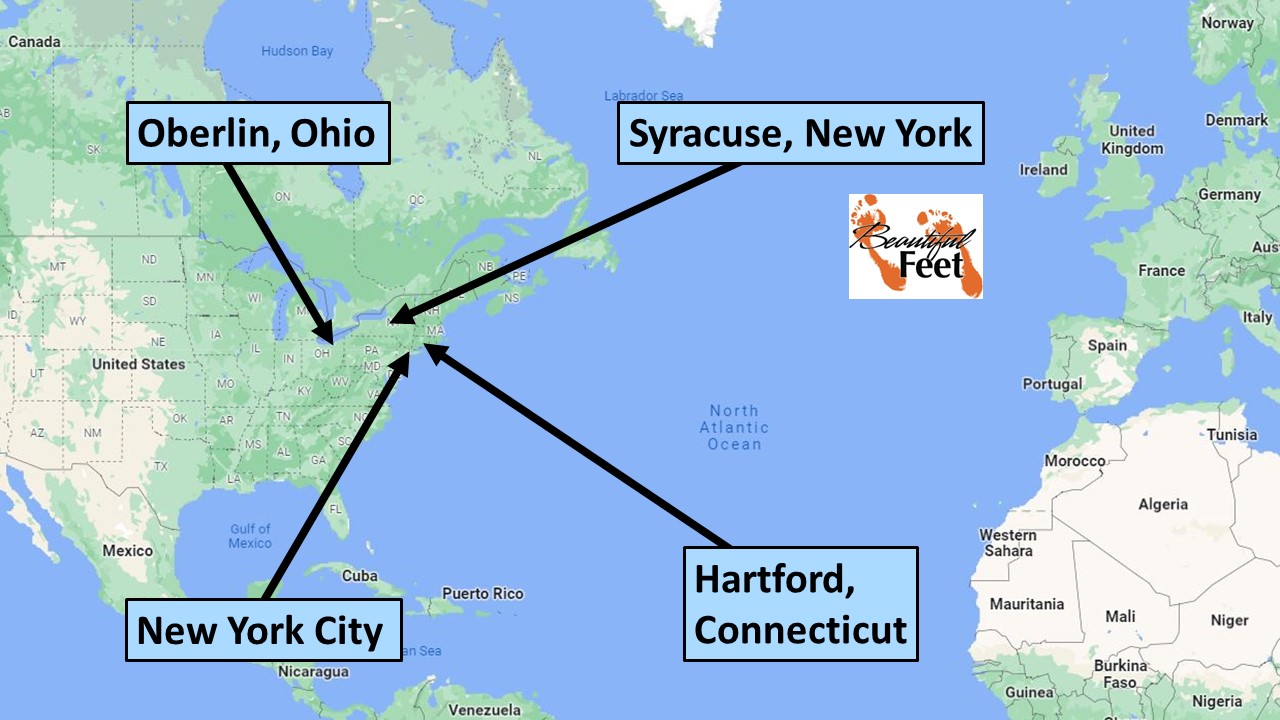
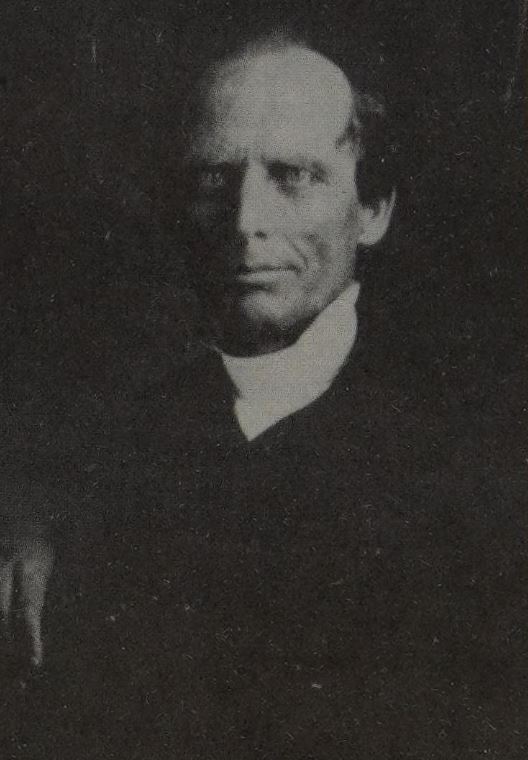
Charles Grandison Finney – Father of modern revivalism and the leading figure of the Second Great Awakening
Introduction
Charles G. Finney’s (1792-1875) unique methods of evangelism earned him the title of the “father of modern revivalism.” His methods paved the way for other mass-evangelists, like Dwight L. Moody, R. A. Torrey, John W. Chapman, Billy Sunday, and Billy Graham, who adapted and built upon Finney’s methods.
Background Information
With this revival account being one in a sequence of revivals during the life of Charles G. Finney, we recommend reading them in chronological order:
► 1824 Evans Mills German Settlement Revival
► 1824 Antwerp, New York Revival
► 1824 Revival at Perch River and Other Locations
► 1825 Revival in Gouverneur, New York
► 1825 Revival in De Kalb, New York
► 1825 Revival in Western, New York
► 1825 Revival in Rome, New York
► 1826 Revival in Utica, New York
► 1826 Revival in Auburn, New York
► 1826-1827 Revival in Troy, New York
► 1827 New Lebanon & Stephentown Revivals
► 1827-1829 Revival at Wilmington and Philadelphia
► 1829 Reading, Pennsylvania Revival
► 1829 Lancaster, Pennsylvania Revival
► 1829 Columbia, New York Revival
► 1830 New York City Revival
► 1830-1831 Rochester, New York Revival
► 1831 Revivals in Auburn, Buffalo, Providence & Boston
► 1832 New York City Revival
► 1835-1840 Revivals in Oberlin, Ohio
► 1841-1842 Boston & Providence Revivals
► 1842 Rochester Revival
► 1842-1843 Revivals in Oberlin, New York, and Boston
► 1849 Revivals in Houghton, Birmingham, and Worcester
► 1850-1851 London, England Revival
From London, England, to Oberlin, Ohio
Charles Finney had just completed 17 months of ministry in England. Those revivals can be read with these links:
► 1849 Revivals in Houghton, Birmingham, and Worcester
► 1850-1851 London, England Revival
Leaving England on April 7, 1851, Finney arrived back at his home in Oberlin, Ohio, on May 20, where he resumed his teaching of theology at Oberlin College, as well as picking up his pastoral duties at the First Congregational Church of Oberlin (location of that church).
Revival Greeted Finney upon His Arrival in Oberlin
When Finney arrived in Oberlin, he was witness to “one of the most powerful revivals ever known at Oberlin,” with 300 conversions before the start of the summer. The revival began during the spring term at the college and continued long into the fall of that year. One report stated about that revival:
A very large number of youth are solemnly thinking and enquiring; many who have previously professed religion are searched and revived, and cases of hopeful conversion are frequent.
Prof. Finney has preached daily for two weeks past, and with manifest tokens of divine power attending.
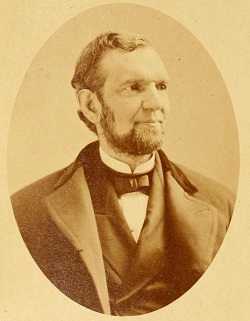
Rev. Joseph Thompson
From Oberlin to New York City
Finney received an invitation from Rev. Joseph Thompson, pastor of the Broadway Tabernacle in New York, to come and hold meetings.
Beginning on Sunday, October 19, 1851, Finney preached about 11 weeks in New York, having generated “considerable interest and some conversions,” with about 50 new members being added to that congregation alone.
In Thompson’s book on the history of Broadway Tabernacle, he remarked on the blessing Finney had been to their congregation:
At intervals, glorious revivals have cheered our hearts with large and precious ingatherings. Most memorable was that occasion, when, to aid your pastor, you invited dear blessed Father Finney to preach again in the house that was built for him at the first. Those months were memorable in the fruits of grace.
Even though there was apparent success in New York, Finney was disappointed that the congregation wasn’t fully engaged and supportive of his efforts, so he preached his last sermon on December 21, 1851, and accepted an invitation to minister in Hartford, Connecticut.
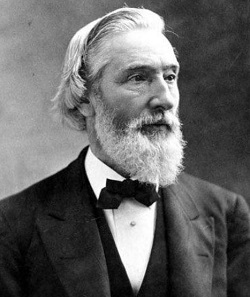
Rev. William W. Patton
From New York City to Hartford, Connecticut
Rev. William Patton, pastor of the Fourth Congregational Church in Hartford, had invited Finney to come and hold a series of meetings. They began on January 2, 1852, and according to Finney:
Very soon a powerful revival influence was manifested among the people.
Stumbling Block to Revival Overcome
There were two ministers who attended the Finney meetings who had stirred up a lot of controversy among the churches in Hartford—Dr. Joel Hawes, of the First Church in Hartford, and Dr. Horace Bushnell, pastor of a Congregational church.
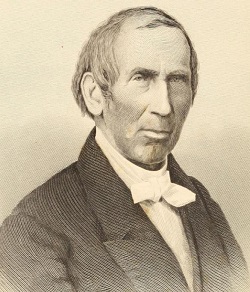
Rev. Joel Hawes
Hawes led the attack against Bushnell’s unorthodox writings, and the conflict
Produced a bad, though scarcely avoidable state of feeling in the city, breaking up harmony of sentiment and action among the pastors and churches.
After one of Finney’s evening meetings, the three ministers, Patton, Hawes, and Bushnell, accompanied Finney to the home where he was staying. After a discussion, and knowing that their differences were blocking the revival’s full release, Hawes asked:
Brother Finney, we are satisfied that the Spirit of the Lord is poured out here; and now what can we as ministers do to promote this work?
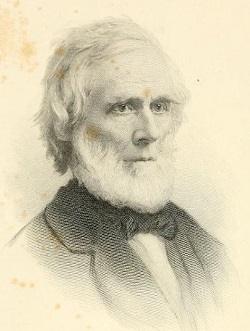
Rev. Horace Bushnell
Finney then told them that they had to reconcile their differences and let their unity be publicly known. Hawes and Bushnell then agreed to put their differences to the side, and when they did, the revival movement spread into all the congregations in the area and continued for weeks as Finney preached in each of the minister’s churches in turns.
Extraordinary Prayer
At the close of each of Finney’s Hartford meetings, a group of young men would gather in a room over the post office to hold a prayer gathering. It was the young people ages 15-25 who were leading and participating in these nightly prayer gatherings.
These meetings generated so much interest that they had to divide and hold two at the same time. And then they began to multiply. Soon the prayer gatherings took on an evangelistic form, with the unconverted being invited to the prayer gatherings, and many souls being saved.
What to Do with New Converts?
With a large number of young converts, close to 600 of them, one of the ministers suggested that it might be in their best interest to start a new church, so that the older members of the congregations wouldn’t extinguish their zeal for the Lord, as so often happens.
Instead of starting a new church, those young converts, men and women, formed a City Missionary Society from which to conduct evangelism. With the young people providing oversight, they were free to be innovative, and among other achievements, they had a powerful impact on a group of young men who were from “high and wealthy” families.
Results of the Hartford Revival
► Over 600 converted.
► Establishment of a City Missionary Society
► There was a revival in the Common Schools, with a considerable number of the students being converted. An unconverted teacher at the time also made a profession of their faith in Christ.
From Hartford to Oberlin
Finney left Hartford to return to their home in Oberlin, Ohio, around the end of March, 1852. He made a stop in New York City, which was already in a state of revival, and preached a few times, but because his “health gave way,” he had to forgo his ministry there and on April 5 continued onward to Oberlin.
Revival in Oberlin
There was almost continual revival occurring in Oberlin, Ohio, at the Oberlin College and surrounding community.
The revival in Oberlin, with its large number of conversions, had become so commonplace that it lost its novelty with the community and it didn’t generate any heightened interest as it would have if it had occurred in another location.
In the July 1852 edition of The Oberlin Evangelist we read:
All along within the past three months the word of the Lord has been with power in that great congregation who sit under Pres. Finney’s preaching. The Oberlin church [members] number about one thousand; the congregation [attendance] nearly two thousand, filling our spacious house full.
From Oberlin to Syracuse
In November 1852 Finney left Oberlin, traveling east, intending to conduct services in Oneida County, New York. On his journey there, Finney passed through Rochester, and while in that city, the Rev. Ovid Miner, of the Congregational church in Syracuse, met Finney and persuaded him to preach at least one Sunday at his church in Syracuse.
After his first Sunday in Syracuse, Finney agreed to remain yet another week for preaching, and after that second Sunday, he said:
Soon I began to perceive a movement among the dry bones.
As Finney’s ministry continued, he witnessed some of the prominent members of the church making confessions and reconciling their differences. He also began to notice that the church was becoming too small to hold the people that were assembling.
Seeing such a movement develop, he could not leave. And it was then that the Presbyterian churches invited Finney to preach in their churches as well, leading to the multiplication of conversions.

Charles Finney and Elizabeth, his second of three wives. His wives accompanied him on his ministry trips. Elizabeth also ministered to various mission organizations and women’s groups.
Extraordinary Prayer
Finney’s wife, Elizabeth, established prayer meetings in all the churches, and as Christians of the different denominations flowed together, their differences disappeared as they worked together.
Results of the Revival
From The Oberlin Evangelist we read:
The Spirit of God descends in power; many backslidden are reclaimed; many deceived professors are converted; that hundreds are inquiring.
In a letter dated March 18, 1853, Finney wrote:
The work of the Lord progresses without any abatement as I can see.
The Finneys remained in Syracuse through the winter, returning to their home in Oberlin, Ohio, by April 10, 1853.
Finney Revival Account List
Access all accounts of Finney’s revivals using this link.
Primary Sources
► Chapter XXXI: The Memoirs of Charles G. Finney by Charles G. Finney
► The Memoirs of Charles G. Finney: The Complete Restored Text by Charles G. Finney
Secondary Sources
► Broadway Tabernacle Church by Joseph P. Thompson
► Charles G. Finney by Wikipedia
► Charles Grandison Finney & the Second Phase of the Second Great Awakening by Christian History Institute
► Great Revivals and the Great Republic by Warren Candler
► Life and Letters of Horace Bushnell by Mary A. Bushnell
► Man of Like Passions: The Life Story of Charles Grandison Finney by Richard E. Day
► Memoirs of Revivals of Religion by Charles G. Finney
► The Life of Rev. Joel Hawes by Edward A. Lawrence
► The Oberlin Evangelist by
► The Story of Oberlin by Delavan L. Leonard
Return to List of Revival Stories
Chet & Phyllis Swearingen:
Office: (260) 920-8248
romans1015@outlook.com
Beautiful Feet
P.O. Box 915
Auburn, IN 46706

